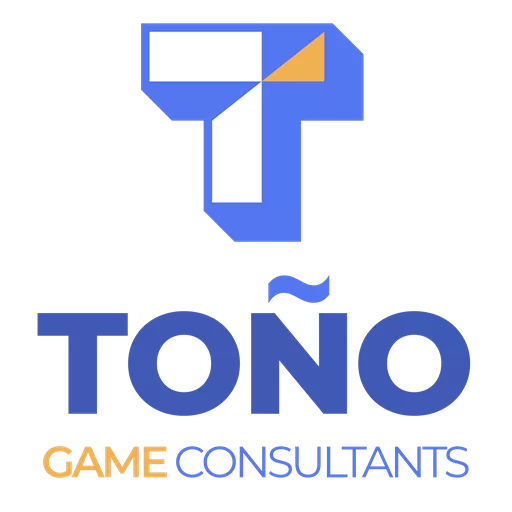Writing a game story without a plan is like building a house without a blueprint. You might end up with something, but it’ll probably have shaky foundations, missing walls, and a roof that leaks.
That’s where story mapping in game development comes in.
When I started my consultancy, I was struck by how often indie teams struggled with scope creep and unclear requirements. Coming from AA/AAA studios, I had taken story clarity for granted, there was always a producer, or technical producer making sure work stayed aligned. Without that structure, indies often stumble.
My first instinct was to offer a story mapping template. It’s a tool I’d leaned on since my Scrum Master training years ago and later refined through Product Owner certification. Story mapping aligns especially well with Scrum, since the framework emphasizes breaking work into stories with clear value. Here, mapping those stories directly to player experience makes the connection between Agile practices and game development crystal clear.
But here’s the twist: even in AA/AAA, story mapping isn’t always done well. Teams often rush into building content without a clear backbone, which creates the same chaos indies face, just on a bigger scale. That’s why story mapping matters at every level of game development: it cuts through ambiguity and gives both small and large teams a shared, player-focused roadmap.
Story mapping is the GPS for your game’s narrative and gameplay. It turns chaotic ideas into a clear roadmap that developers, artists, and designers can follow. Whether you’re building a sprawling RPG or a quirky indie platformer, story mapping ensures your game has structure, avoids endless scope creep, and actually reaches the finish line.
Let’s break it down.
What’s Story Mapping, Really?
Story mapping is how you lay out the player’s journey, from the first action to the final boss, and connect it to the mechanics and features that make it possible.
Think of it as taking a messy pile of ideas and organizing them into something everyone can follow:
-
Intro: tutorial or safe zone.
-
Core loop: combat, puzzles, exploration, progression.
-
Climax: boss battle or story twist.
-
Resolution: how the player wins.
It’s not about writing every detail. It’s about seeing the big picture and how your features support the experience. Unlike a simple backlog (a to-do list), a story map is structured around the player’s story.
Writing Good Stories for Story Mapping
A story map isn’t just a list of tasks, it’s built from stories. Stories describe the goal we want to achieve, not just the work we do. They make sure everyone understands the why behind a feature, not just the what.
The most effective way to write them is with a simple 3-part structure:
-
Who will benefit?
-
What do we need to build or do?
-
Why is it important (or what should be possible after it’s implemented)?
For example:
-
As a player, I want to jump so I can move from platform to platform.
-
As a QA analyst, I need to see the frame rate in real time so I can identify performance bottlenecks.
Notice that the end user isn’t always the player, it could be another developer, a tester, or even another discipline in your studio. The story makes the purpose of the work clear to everyone.
But don’t confuse “story form” with clarity. A vague story is just as bad as a vague task. Every story should include references, details, and a clear Definition of Done. That way, the developer knows when they’ve completed the work, and the Product Owner can validate it without confusion.
When stories are written well, story mapping becomes a powerful tool to align design, development, QA, and production around a shared vision of what the game needs.
Why Bother with Story Mapping?
So why spend time story mapping when you could just start prototyping? Here’s why:
1. No More “Feature Soup”
Teams often throw in mechanics without asking how they fit. Story mapping forces you to connect features to the player journey, so your game doesn’t turn into a Frankenstein’s monster.
2. Focus on the Player Experience
Instead of asking, “What features do we want?” you ask, “What will the player do?” That shift ensures design choices feel intentional and immersive.
3. Build in Playable Slices
Story mapping really comes into play after the early experiments are done. Once a prototype has validated the core experience and engine proof has locked down technical feasibility, the next real milestone is the vertical slice. That’s when production truly begins.
Story mapping helps you chart the path to that slice. It turns broad ideas into a structured route, showing which features, systems, and content need to come together first. You may not know all the problems you’ll encounter along the way, but with a clear map, your team knows the direction and can adjust as challenges appear.
Think of it as setting your course toward the first “true” milestone in development. By linking prototypes, engine proof, and story mapping to the vertical slice, you’re not just building features, you’re building a playable, testable version of your game’s future.
4. Keep Everyone on the Same Page
Game dev teams are multidisciplinary. Story maps act like a universal translator, giving designers, programmers, artists, QA, and producers the same reference point. (Related: Scrum Master vs. Product Owner in Game Dev).
5. Spot Gaps Before They Break the Game
Story maps reveal pacing holes, missing tutorials, or mechanics without context long before they become expensive rework.
6. Iterate with Confidence
Because story maps are flexible, you can refine them after playtests. Features shift up or down in priority, but the structure remains clear.
7. Prioritize Like a Pro
Every game has scope creep, the scope of your game tends to be infinite. The more you add, the more you want to add. Story mapping gives you the structure to see everything on the table, but prioritization is what helps you draw the line between must-haves and nice-to-haves.
For example:
-
Must-have: Core combat system, level progression, boss battles
-
Nice-to-have: Dynamic weather effects, customizable armor skins
-
Maybe-later: That elaborate fishing mini-game no one asked for
Want help deciding what to cut and what to keep? Download our free Game Dev Prioritization Tool built to help indie and AA teams sort through features and keep production lean.
Once features are prioritized, the natural next step is time estimation, figuring out how much effort each story will actually take. That’s when your map starts transforming from a wall of sticky notes into a real production plan.
Here’s where scope creep usually wins. As I often say: “The scope of your game tends to be infinite, the more you do, the more you want to add.” Story mapping helps you draw the line between must-haves and nice-to-haves.
8. A Roadmap Players Would Understand
If your map feels confusing, your game will too. A story map doubles as a sanity check: would this flow make sense if you played it?
How to Start Story Mapping Without Overthinking
Getting started doesn’t need to be complicated. Here’s a simple process:
-
Map the Backbone: Outline the player’s high-level journey (tutorial → exploration → progression → boss fight).
-
Break Into Actions: For each step, list what the player actually does.
-
Slice, Don’t Stack: Start with the thinnest vertical slice, just enough mechanics to test if it’s fun.
-
Collaborate Early: Involve designers, programmers, artists, and QA. Story mapping works best when everyone has a voice.
-
Aim for “Good Enough”: The first map is just a draft. Refine it as you test and learn.
This approach ensures progress without perfection paralysis.
Should You Map Everything?
No. Over-mapping is just as bad as under-planning.
Map the essentials, the backbone of your game, the must-have mechanics, the player’s main path. Leave flexibility for discovery. Gaps are opportunities. Some of the best features come mid-development when a playtester or designer sparks a new idea.
What Tools Make Story Mapping Easy?
The best tool is the one your team will actually use. Options include:
-
Sticky notes on a wall → great for in-person brainstorming.
-
Miro → digital whiteboard, ideal for remote teams.
-
Trello → simple card-based system to map journeys.
-
Figma → flexible for visual or text-driven teams. (See the article Figma Has Won for why so many tools developers are choosing it.)
- Notion → flexible for text-heavy teams, combining documentation and mapping.
Hybrid tip: start with sticky notes, then migrate to digital for ongoing tracking.
Closing: From Map to Production
Story mapping gives you clarity. Production makes it real.
A map without execution is just paper (or pixels on a board). Turning it into milestones, tracking dependencies, and ensuring delivery requires production discipline.
👉 Ready to go from sticky notes to shipping? Explore my Production Consulting Services and get the structure your team needs to finish strong.
FAQ: Story Mapping in Game Dev
What is story mapping in game development?
It’s a technique to structure the player’s journey and tie features directly to it. Unlike a backlog, it shows the why behind each task.
Why should indies use story mapping?
Without it, you risk endless scope creep and misaligned priorities. Story mapping ensures clarity even without a dedicated producer.
How does story mapping connect to prototyping or vertical slices?
Prototyping is about testing mechanics in isolation, quick experiments to see if an idea is fun. A vertical slice is about proving feasibility, showing that art, code, design, and systems can come together at production quality. Story mapping is the bridge between the two. It takes the lessons from prototypes, aligns them with what engine proof has confirmed is technically possible, and lays out the player’s journey so the team knows how to reach the vertical slice milestone without drifting into scope creep.
What’s the best story mapping tool?
Sticky notes for local teams, Miro or Trello for remote. The tool matters less than the discipline of updating and using the map.
Can story mapping help prevent scope creep in game development?
Yes, because it forces teams to break big ideas into smaller, clear stories. From there, you can prioritize what matters most and avoid drowning in “nice-to-have” features. Story mapping doesn’t finish the job on its own, it requires follow-up activities like prioritization and time estimation, but it’s the essential first step to keeping scope realistic.
What’s the difference between a task and a user story in game development?
A task is a to-do item (e.g., “implement jump function”). A user story connects the work to value: “As a player, I want to jump so I can explore platforms.” Stories keep the team focused on the “why,” not just the “what.”
Do user stories always describe the player?
Not always. In game dev, the “user” might be QA, designers, or even the publishing team. Anyone who benefits from the feature can be the “user” in a story.
Why is a Definition of Done important for user stories?
Without clear criteria, developers can “finish” a feature but still miss expectations. A definition of done ensures the developer and product owner agree on what complete means, reducing rework and scope creep.


